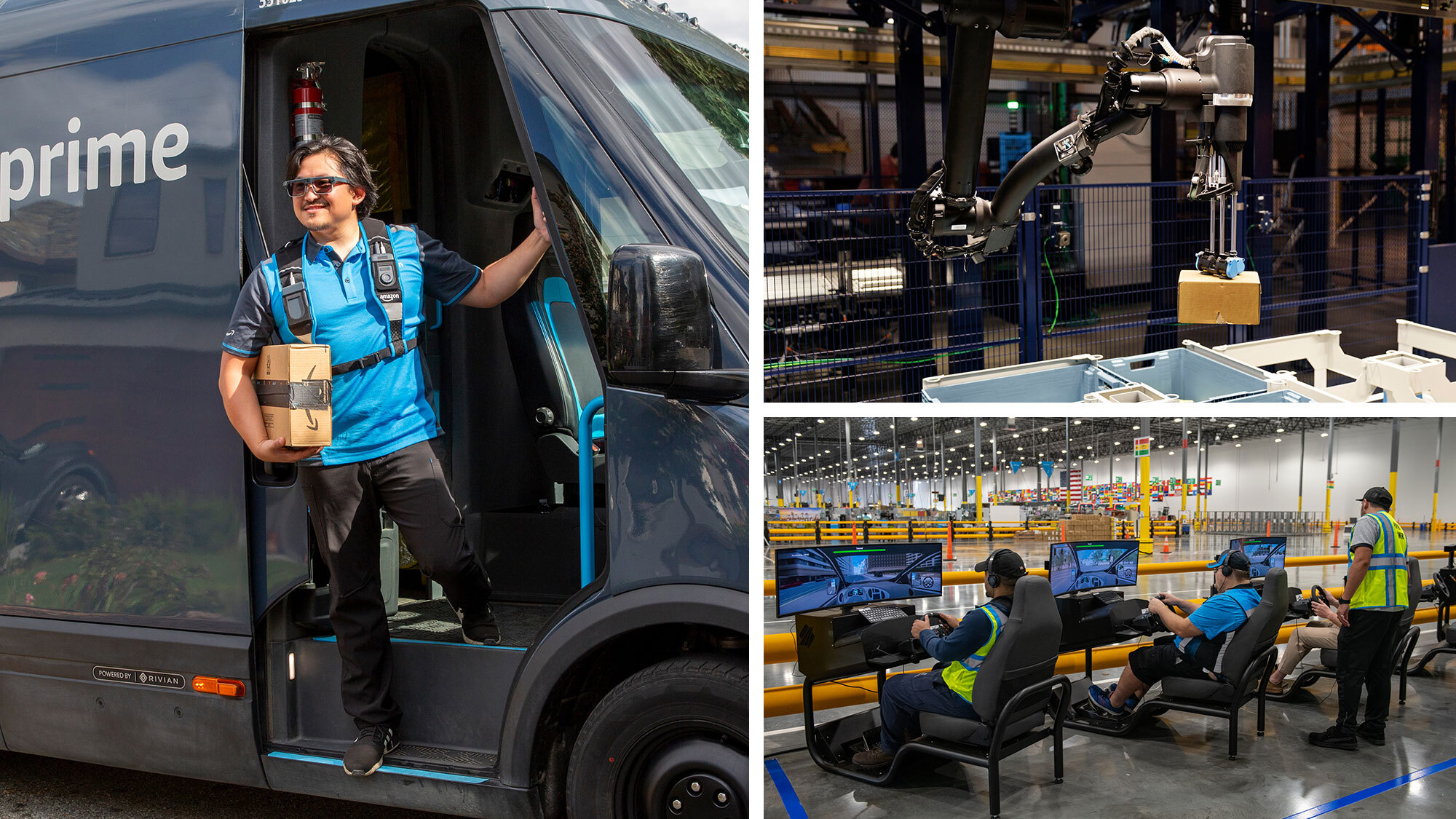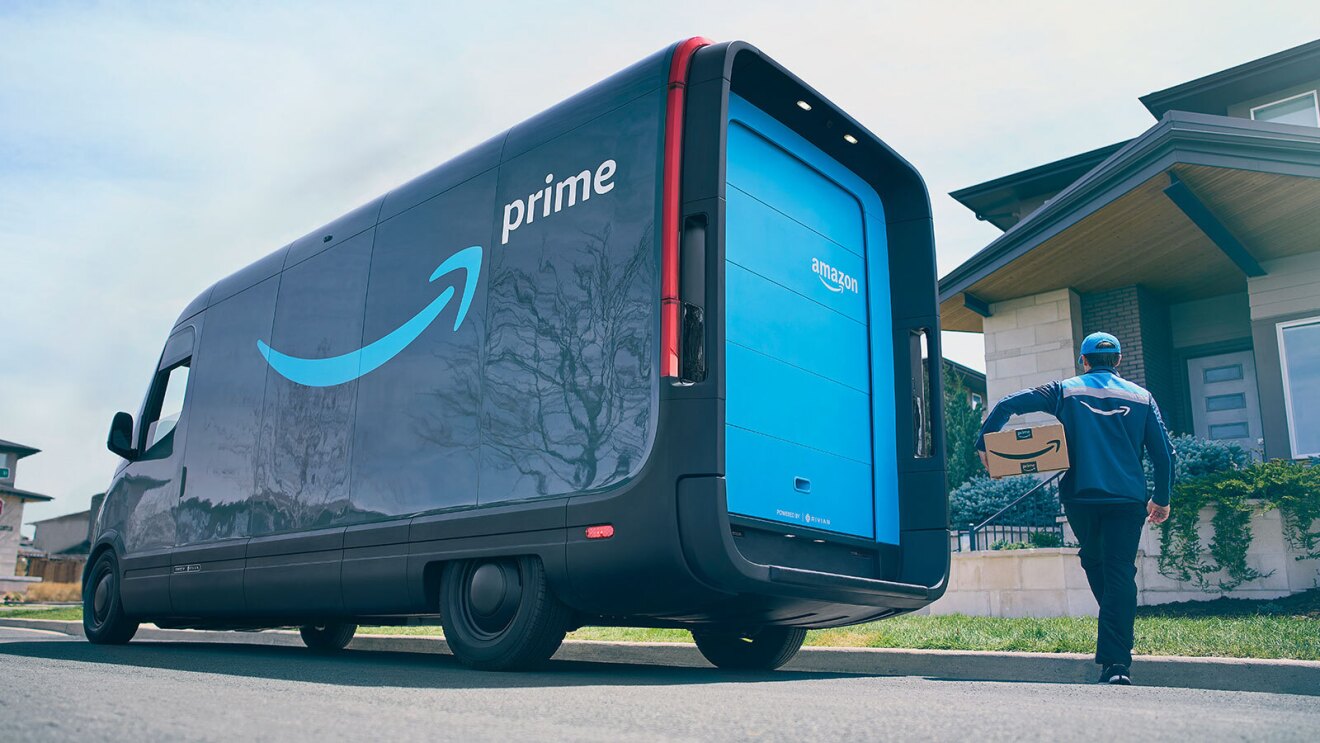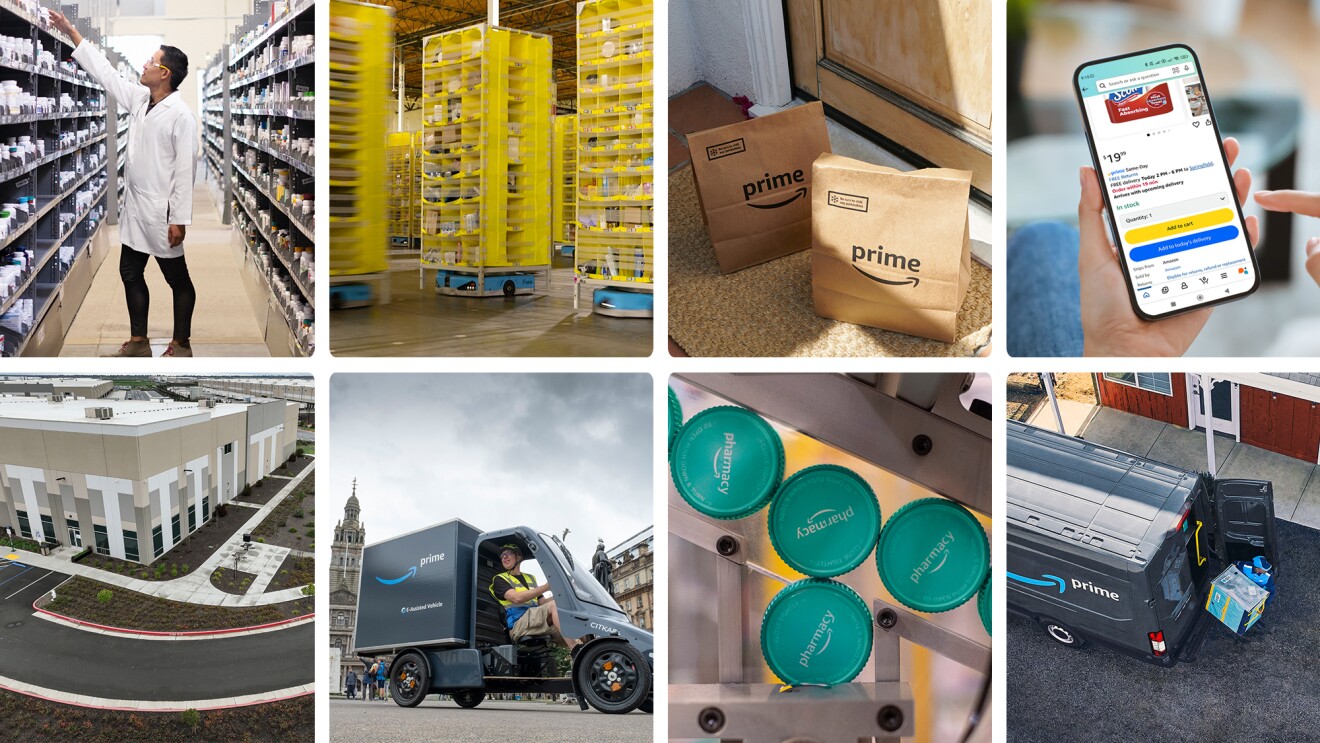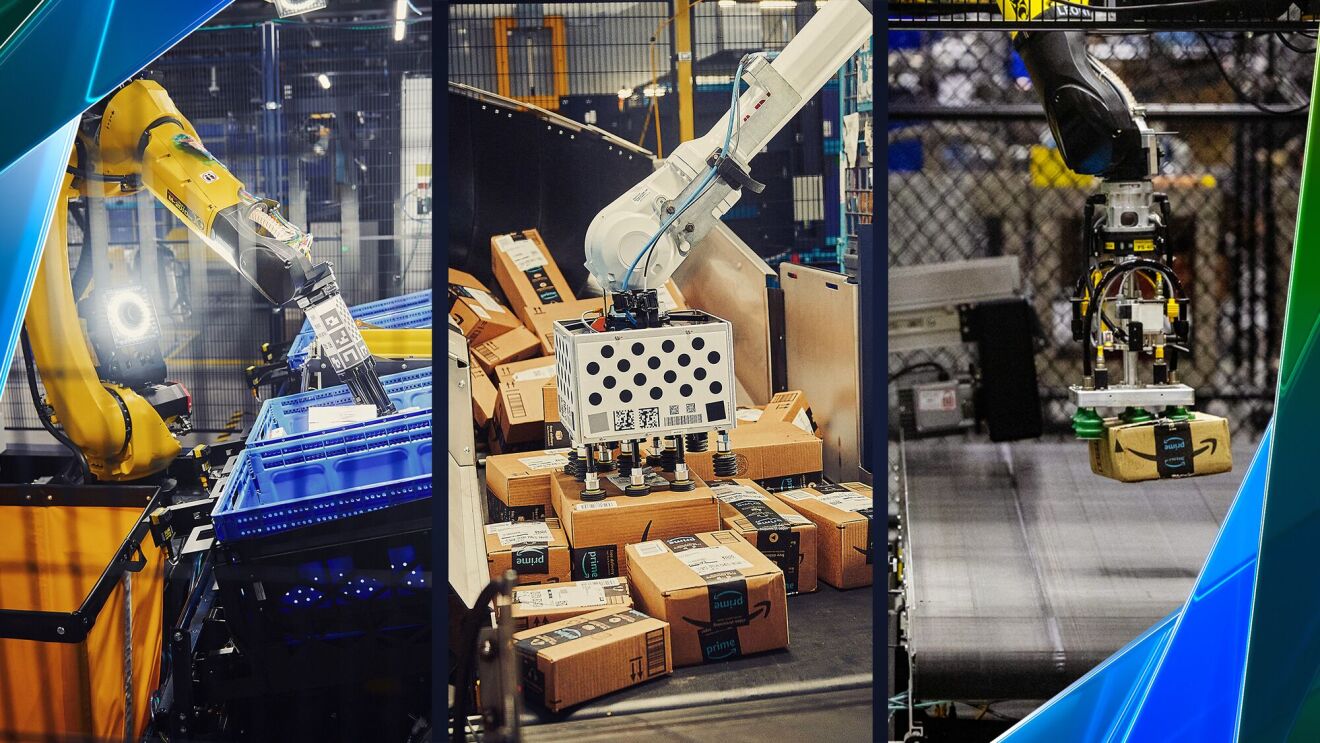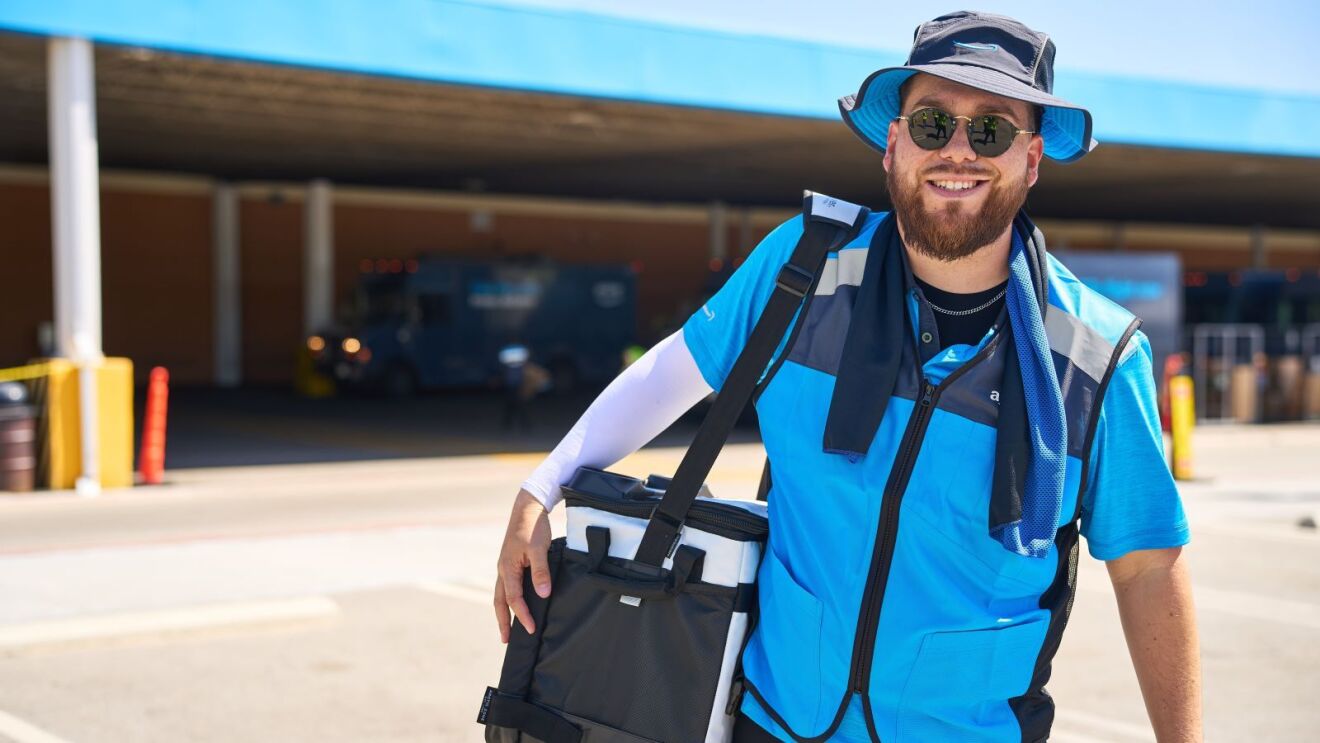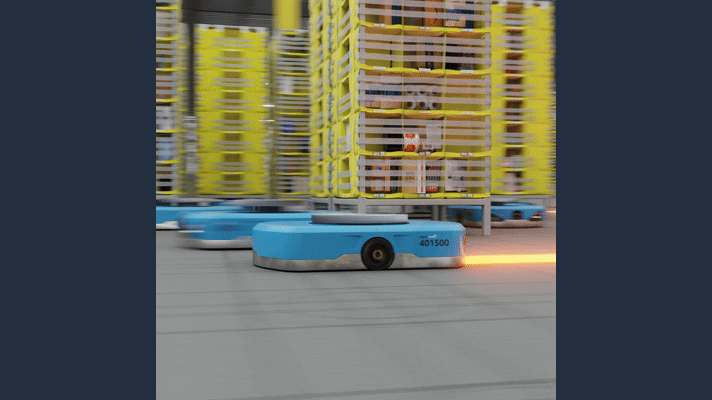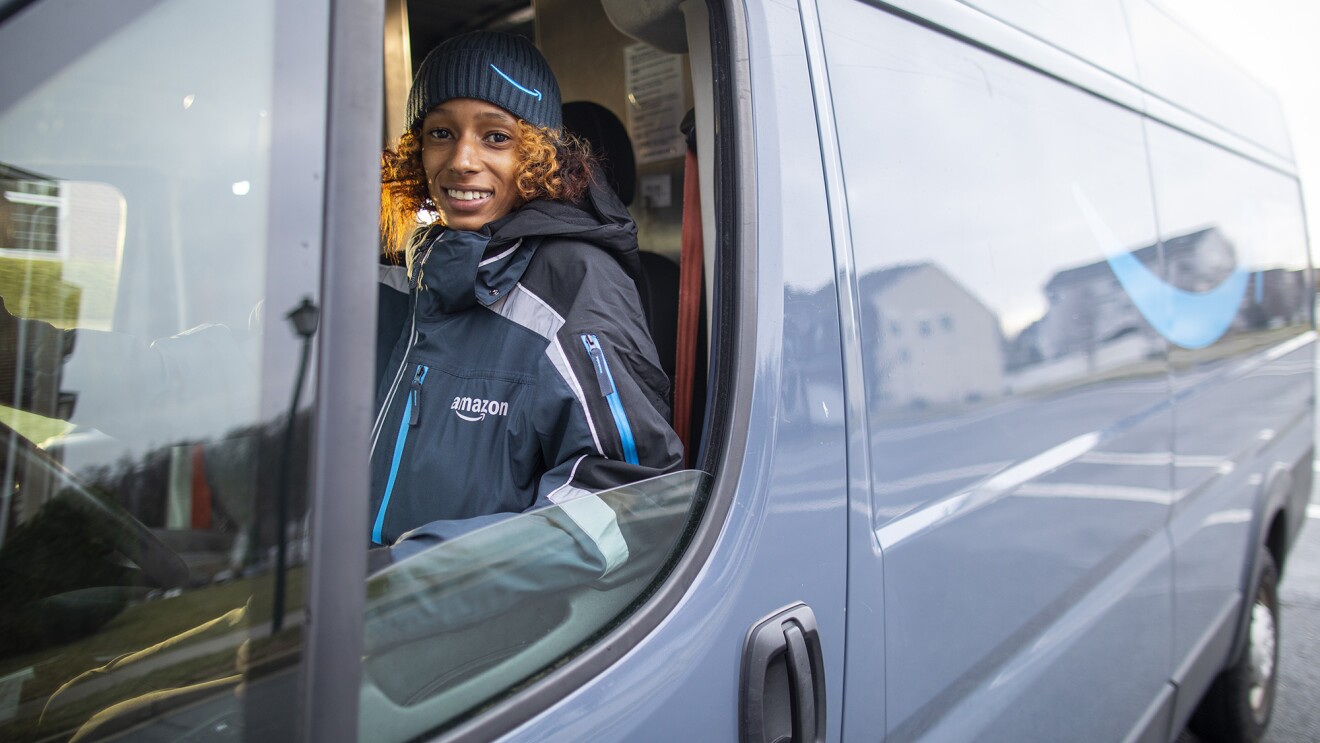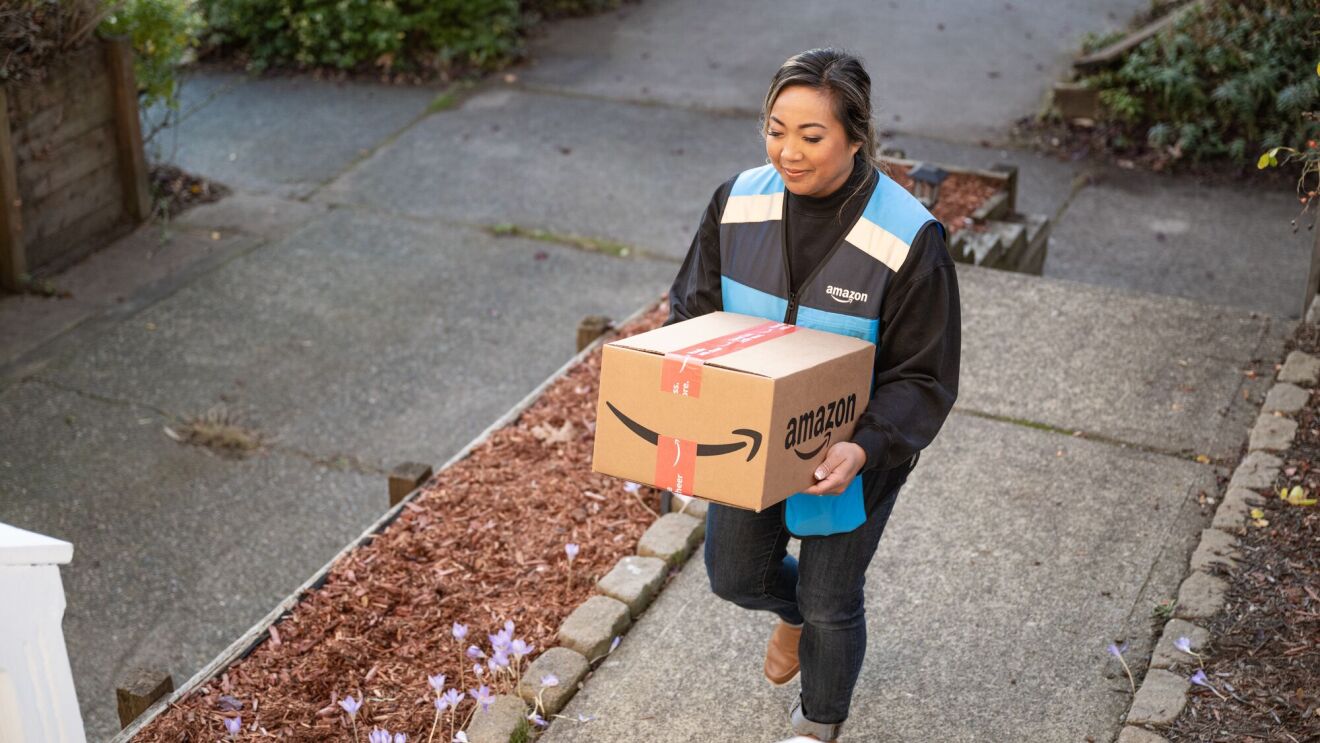Key takeaways
- New innovations were designed with Amazon’s front-line employees in mind to reduce repetitive tasks, improve safety, and boost productivity.
- A new robotics system, agentic AI tool, and smart glasses for delivery drivers are among the biggest announcements.
- Amazon’s AI solutions reduce packaging waste, support disaster relief, and advance clean-energy solutions.
At Amazon, innovation isn't just about technology—it's about creating meaningful impact for customers, employees, communities, and the planet. The company's latest advancements showcase how technology works together with our employees to solve complex challenges, from delivery speed to food insecurity to sustainable AI.
In fulfillment centers across the U.S., new AI and robotics systems like Blue Jay and Project Eluna are empowering employees to work smarter, not harder. Blue Jay handles repetitive tasks and Project Eluna provides operational insights, both of which build safer and more efficient workflows for our front-line employees.
AI-powered sustainability initiatives are also reducing packaging waste, supporting disaster response, and advancing clean energy solutions. Beyond commercial delivery, Amazon is extending its commitment to fighting hunger by continuing its free home food delivery program through 2028.
These innovation announcements aren’t just powering a better Amazon, they’re demonstrating how Amazon's operational innovations create value that extends far beyond packages arriving at doorsteps.
Blue Jay: A new robotics system to speed up deliveries

Blue Jay is a next-generation robotics system that coordinates multiple arms to perform picking, stowing, and consolidating tasks simultaneously. This breakthrough technology effectively collapses three assembly lines into one, creating greater efficiency in less space while supporting front-line employees.
Already being tested in South Carolina, Blue Jay allows employees to shift from repetitive physical tasks like stowing items to higher-value work like quality control and problem-solving, making jobs less physically demanding while ensuring customers receive the right products faster.
Project Eluna: An agentic AI model to help teams make better decisions
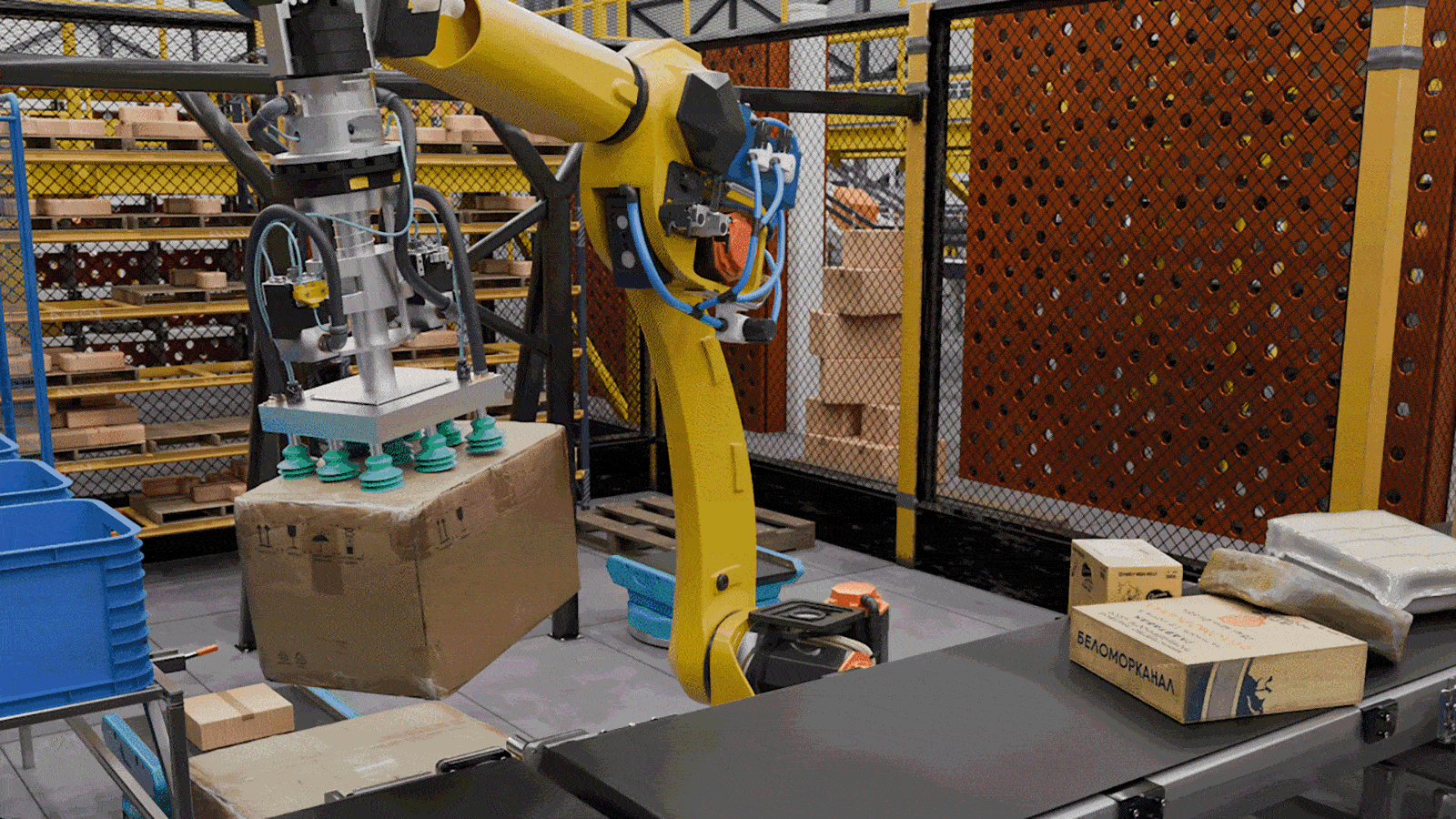
Project Eluna is an agentic AI model that transforms how fulfillment centers operate. This digital tool processes real-time and historical data from across facilities, providing insights in natural language to help operations teams make better decisions.
Project Eluna enables operators to anticipate bottlenecks and chart efficient paths forward instead of scanning dozens of dashboards. Currently being deployed at a Tennessee fulfillment center for the holiday shopping season, Project Eluna will optimize sortation and eventually support preventive safety measures, helping plan ergonomic employee rotations and improve maintenance schedules. The system allows operators to spend less time analyzing dashboards and more time coaching teams, creating safer work environments while enabling smarter, faster decision-making across Amazon's global operations network.
Smart delivery glasses for drivers
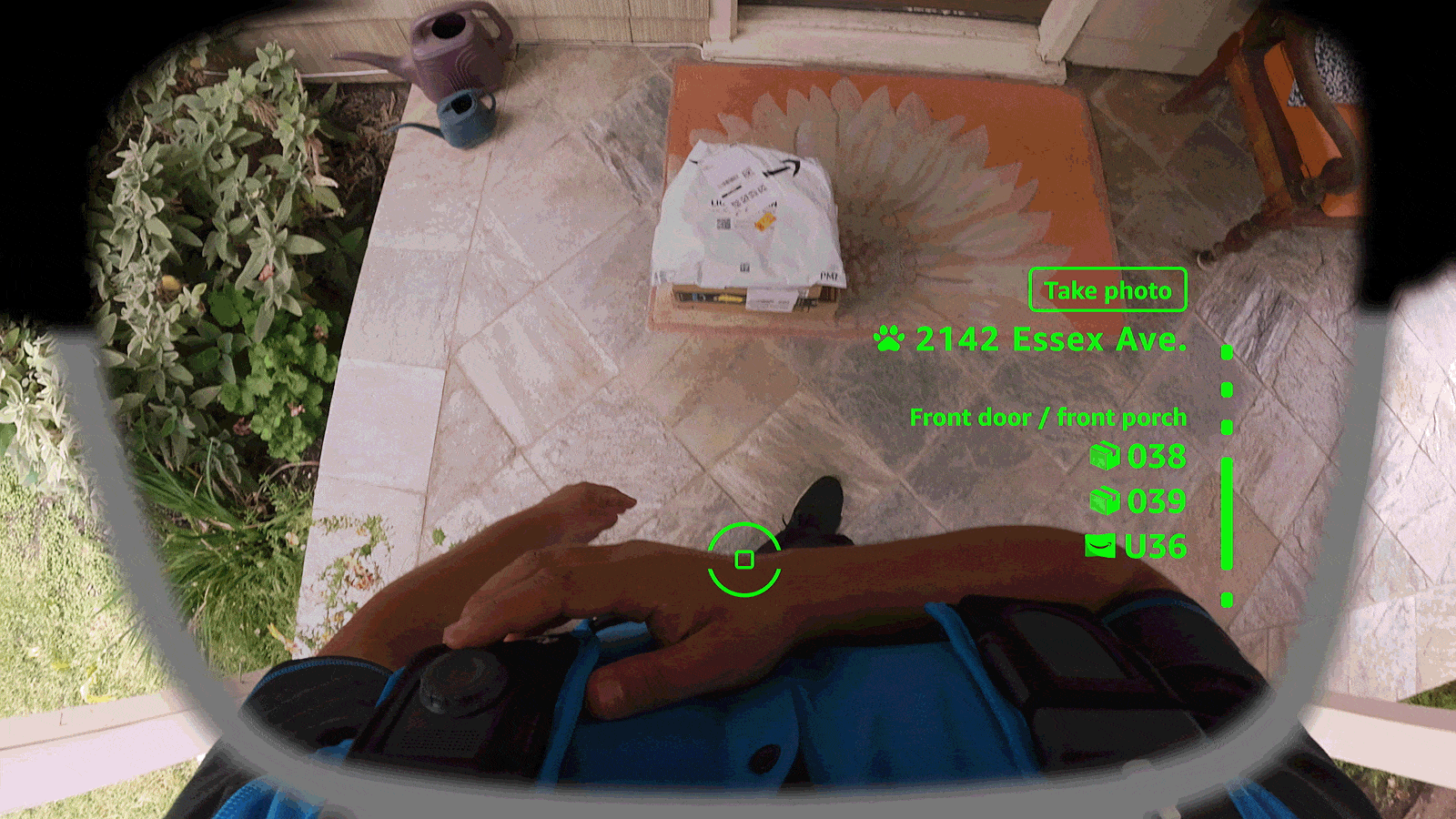
Amazon is developing innovative smart glasses technology designed to transform the delivery experience for its drivers. This wearable system serves as a driver’s companion throughout the delivery journey, allowing drivers to work hands-free while keeping their focus on their safety and surroundings.
The smart glasses display essential information directly in the driver's field of vision, enabling them to scan packages, follow turn-by-turn walking directions, and capture proof of delivery without needing to reference a smartphone.
Designed with input from hundreds of Delivery Associates, the system enhances safety by keeping drivers' eyes forward while making deliveries more seamless. The glasses also leverage AI and computer vision to detect potential hazards like pets or uneven walkways, sharing that information to benefit future deliveries.
New virtual reality training for delivery drivers
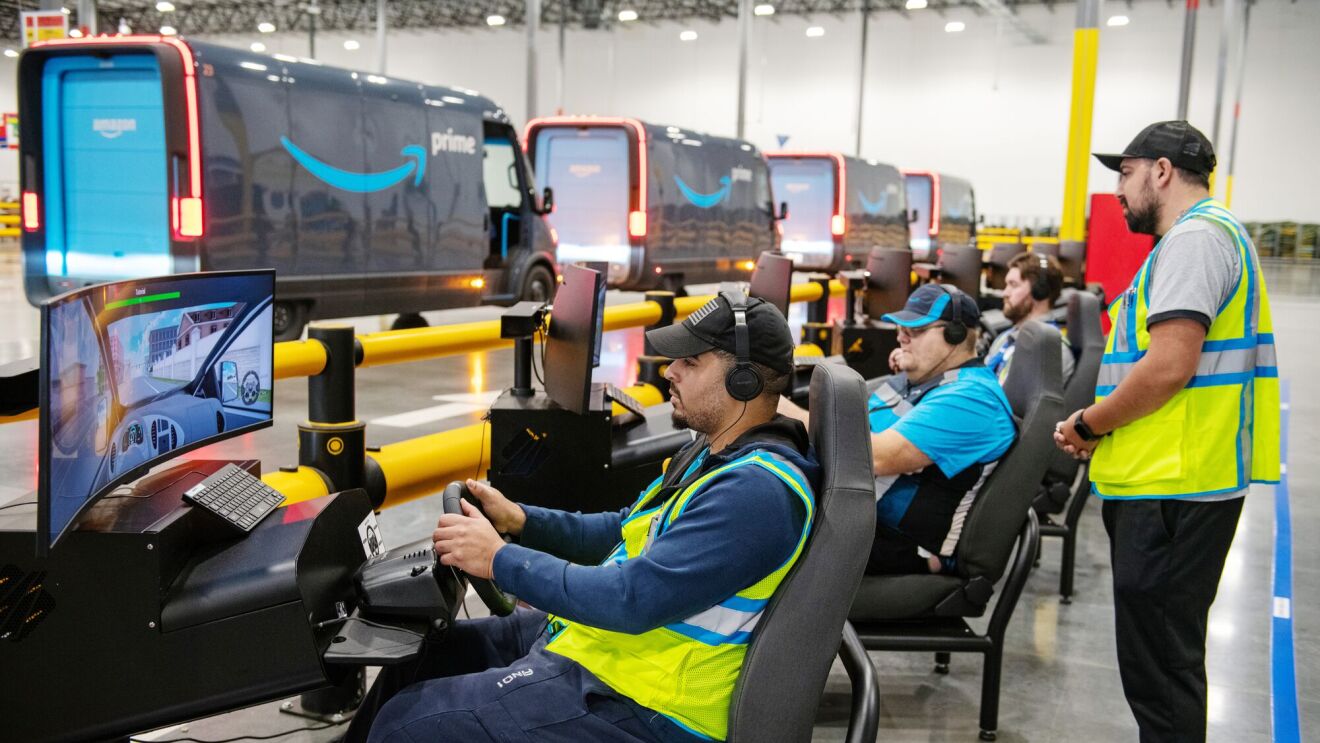
Amazon is revolutionizing delivery driver training with immersive virtual reality modules that prepare drivers for real-world challenges before they hit the road at Integrated Last Mile Driver Academies (iLMDA). More than 300,000 drivers have completed the VR training since 2022. Based on the positive impact and enthusiastic feedback, iLMDA is projected to grow to more than 95 delivery stations across North America by December 2026, bringing enhanced safety training to thousands more drivers.
The newest program to the iLMDA, is the Enhanced Vehicle Operation Learning Virtual Experience (EVOLVE). It’s a driving simulator that recently launched in Colorado, Maryland, and Florida facilities. This driving simulator provides immediate feedback on performance to learners and prompts hands-on critical defensive driving skills development in a safe, standardized virtual environment. More than 6,000 newly onboarded drivers have participated in EVOLVE, with a behind-the-wheel participation rate over 90%. Amazon anticipates 40 iLMDA sites will offer the EVOLVE experience by the end of 2026.
More delivery innovations designed for speed
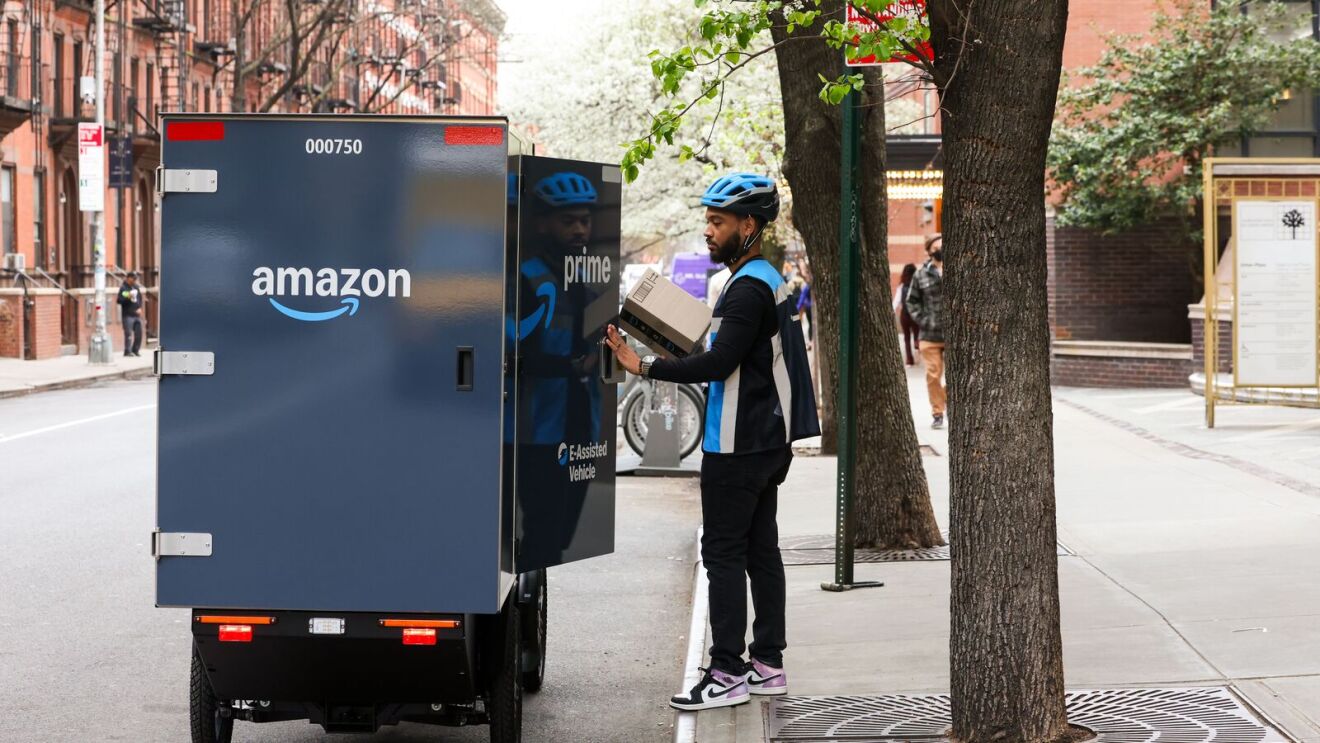
Amazon is on track to deliver at its fastest speeds ever for Prime members globally in 2025, with more total items arriving the same or next day than ever before through technological innovation, strategic facility placement, and specialized delivery methods.
The company's $4 billion investment is tripling its rural delivery network by 2026, bringing Same-Day and Next-Day Delivery to more communities. AI-powered demand prediction places inventory closer to customers, while Amazon Pharmacy now offers prescription medications for Same-Day Delivery in over a dozen major cities including New York, Los Angeles, and Seattle—with recently announced kiosks, delivering medications in minutes.
Specialized vehicles ensure optimal delivery in different environments—from e-cargo bikes in dense cities to drones in Arizona. Meanwhile, sustainable Same-Day sites like Sacramento's Zero Carbon-certified fulfillment center prove speed and sustainability can coexist. Amazon has also expanded Same-Day Delivery to include perishable grocery items, allowing customers to receive fresh produce and other temperature-sensitive items within hours.
Free home delivery program extended
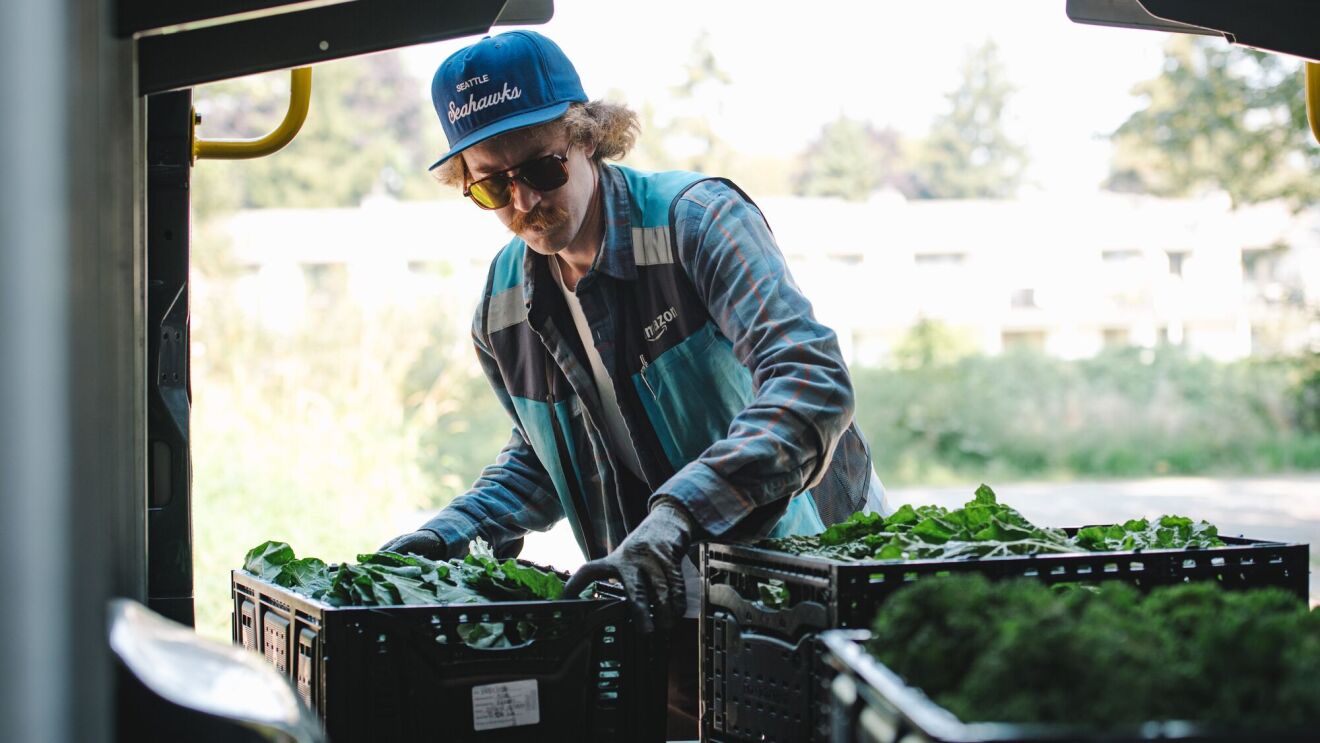
What began as a pandemic response has grown into a long-term mission to expand access to food for families affected by hunger. Amazon is now extending our commitment through 2028, continuing to use our delivery network and logistics expertise to bring groceries from food banks directly to families in need—for free. Since 2020, we’ve delivered more than 60 million meals across the U.S. and UK.
This multi-year commitment ensures our more than 40 food bank partners can plan ahead, invest confidently in their home delivery operations, and continue reaching neighbors who might otherwise go without essential nutrition.
For families who face barriers to accessing traditional food assistance, such as transportation challenges or health concerns, direct home delivery provides more than just food—it offers reliability and dignity. Using the same powerful delivery network that serves millions of customers daily, Amazon and our food bank partners are helping expand access to critical food assistance by meeting people where they are.
Amazon’s commitment to sustainable AI
Amazon is building a more sustainable company by taking a holistic approach to the growth and deployment of AI. We’re harnessing AI to accelerate sustainable solutions for people and the planet, while simultaneously investing in solutions to support growing energy and water needs.
- AI-driven shopping tools help customers find the right fit, helping to reduce returns and associated environmental impacts by avoiding unnecessary trips.
- The company's Packaging Decision Engine optimizes packaging choices, which has helped avoid 4.2 million metric tons of packaging waste since 2015.
- “Project P.I.” uses AI for quality control to identify defects before shipping, working to minimize waste from returns.
- During disasters like Hurricane Helene, Amazon’s Disaster Relief team is using AI to analyze drone imagery and help first responders accelerate search and rescue operations.
- To help power its AI infrastructure sustainably, Amazon is investing in next-generation nuclear energy—specifically, small modular reactors—and its partnership with X-energy is expected to generate enough clean energy to power 3.8 million U.S. homes annually by 2039.
- Amazon is also advancing water conservation, which includes scaling the use of recycled water cooling systems in many data centers, supporting over 30 water replenishment projects globally, and sharing best practices through the Water-AI Nexus Center of Excellence.
Trending news and stories
